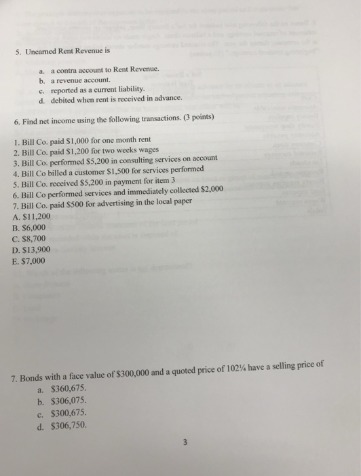
This should be the same account that corresponds to your actual bank statement. If you added a payment to a deposit by mistake, you can remove that payment easily by clicking on the deposit or amount field in the deposit entry line in the Deposit Detail report. It will take you to the bank deposit screen where you can uncheck the checkbox for the payment you wish to remove, and then click Save and close. Using your deposit slip as a reference, combine the check and cash payments with a bank deposit. Record the payment received from your customer and place it into the Undeposited Funds account.
Step 2: Review and Organize Your Transactions
Your Undeposited Funds account should only contain items that are currently pending deposit. Perhaps you forgot to record a prior deposit or the check was lost and never deposited. Once done, click Save and close, and your received payment will automatically be reflected in the Undeposited Funds account. To help you better understand how to complete the form, let’s use an example. Say we received a $1,700 check payment from Aaron Berhanu for a heating, ventilation, and air conditioning (HVAC) installation invoice. When you receive a paper check or cash for payment of an invoice, click on the + New button at the upper left portion of your QuickBooks Online dashboard and then select Receive payment, as shown below.
Review any additional fields in the bank deposit form, such as payment method or reference numbers, and fill them out as needed. Identifying and addressing duplicate transactions can significantly contribute to fixing undeposited funds in QuickBooks Online, ensuring accuracy and consistency in financial records. Take your time to verify 5 cash flow performance kpis every cfo needs to track the details before finalizing the clearing of undeposited funds to maintain the integrity of your accounting records.
Step 3: Reconcile the Account Again
It’s important to note that undeposited funds are a feature specific to QuickBooks Online. If you’re using a different accounting software, make sure to check if a similar feature exists or if you need to handle customer payments differently. This feature is particularly useful if you receive multiple payments throughout 6 3 receivables intermediate financial accounting 1 the day or week and want to group them together for a single bank deposit. Instead of creating individual deposits for each payment, undeposited funds allow you to consolidate and record them together in one transaction.
Verify that the deposit amounts in QuickBooks match those in your bank statements. Once the deposits are accurately recorded, the undeposited funds will be cleared, contributing to the overall accuracy of your financial records. One crucial step is to review the undeposited funds account and ensure that it reflects the correct balance. This involves reconciling the account are long arms sexier than long legs with the related bank and income accounts to identify any discrepancies. Subsequently, it’s essential to adjust the undeposited funds settings to streamline the deposit process and prevent it from accumulating balances over time. This level of attention to detail ensures that all deposits are accurately reflected in the undeposited funds account.
How To Transfer Funds Between Bank Accounts in QuickBooks Online

It’s crucial to maintain consistency in updating and clearing undeposited funds to avoid discrepancies and errors in financial reporting, thereby upholding the integrity of the accounting system. By meticulously cross-referencing the deposited amounts with the corresponding invoices and payments, businesses can gain a comprehensive understanding of their financial transactions. This process facilitates the identification of any discrepancies or outstanding payments, contributing to a more streamlined and transparent financial record. This process enables businesses to reconcile their accounts effectively, providing a clear picture of all pending transactions and their eventual deposit into the bank. It plays a pivotal role in maintaining financial transparency, aiding in the smooth functioning of the clearing process in QuickBooks Online. Before initiating the clearing process, it is crucial to review the undeposited funds account in QuickBooks Online to identify all pending payments and receipts awaiting deposit.
- This ensures that the records in QuickBooks Online align with the actual deposits made in your bank account.
- Fill in these fields accurately to reflect the specific details of your deposit.
- The importance of this step becomes even more apparent in the next screenshot.
- It is crucial to review each transaction meticulously, comparing the bank deposit entries with those recorded in the undeposited funds account.
- Once the bank deposit is saved, QuickBooks Online will create a new transaction to represent the actual deposit into your bank account.
Verify Your Undeposited Funds Account
Undeposited funds in QuickBooks Online refer to the payments received from customers that have not yet been deposited into a bank account. It is an interim holding account used to manage pending deposits and streamline the reconciling process. The funds have now been moved from the Undeposited Funds account to your selected bank account, and the deposit is recorded in QuickBooks. Make sure to reconcile your bank account in QuickBooks to ensure that it matches your actual bank statement. This account is special because it’s a temporary account that QuickBooks uses to hold received payments from invoices before you deposit them in the bank. Imagine this account as the blue bank deposit bag businesses use to hold cash/checks/etc before they deposit them at the bank.
We will explain the concept of undeposited funds and why it is important to clear them. We’ll also provide you with a step-by-step process to help you confidently clear undeposited funds in your QuickBooks Online account. Any undeposited payments sitting in the Undeposited Funds account will appear in the list of payments without a checkmark. When you immediately receive a cash or a check for a sales transaction without having created an invoice, then you must use the Sales receipt form to record the check and revenue. Ultimately, these adjustments play a critical role in maintaining the financial accuracy and reliability of the organization’s records. The importance of this step becomes even more apparent in the next screenshot.
Delete any rows from the deposit that represented the payment(s) and then the deposit total will be the same as before. Maintaining good record-keeping practices and conducting regular audits can help in preventing and addressing duplicate transactions effectively. Let me share some insights on how to clear it out and how undeposited funds work in QuickBooks Online.